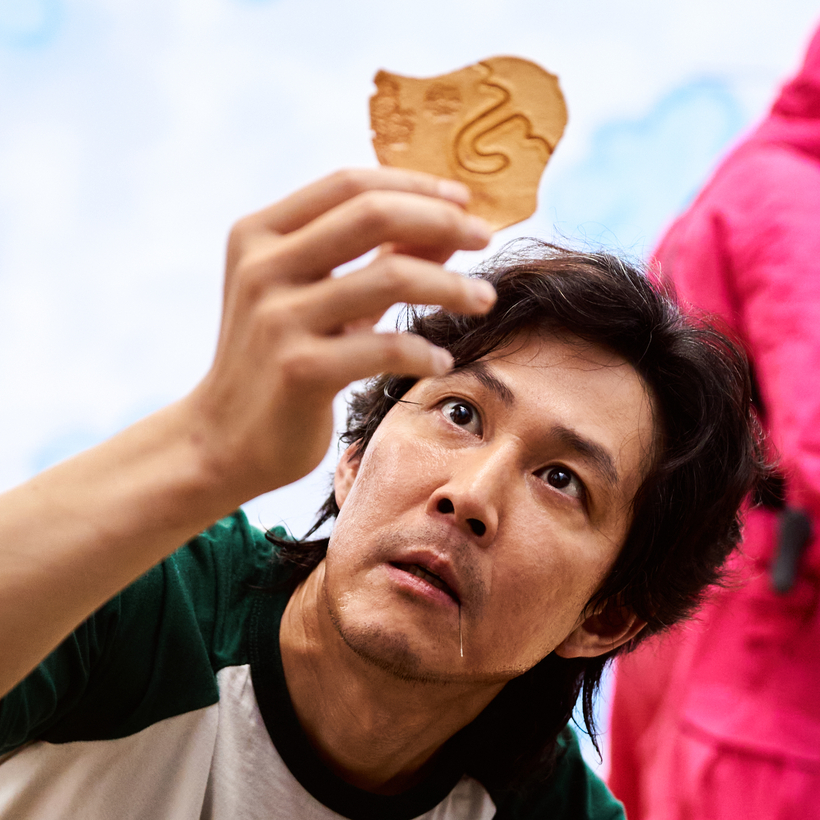The days of scrolling through versions of the same dance and lip-synching videos on TikTok are over. Today, going on the social-media app is like entering an episode of Squid Game.
There are videos of pink-haired influencers playing the toffee game with their baked goods, an ode to Episode Three that has since been awarded its own filter on the app. A Squid Game–inspired electronic-dance-music song by D.J. Rhys Sfyrios is going viral. And the audio of the show’s oversize plastic doll singing “Mugunghwa kochi pieotsumnida,” which Netflix translates as “Red light, green light,” in Episode One has been used in 420,000 videos and counting—while digitized variations of the same doll breaking into dance have been shared millions of times.
It doesn’t end there. Last month, YouTube star Jimmy “MrBeast” Donaldson told his fans he would replicate Squid Game in real life if his video reached 10 million likes. It now has more than 17 million.

You know the story by now. The South Korean drama that took over everyone’s screens sees people down on their luck compete in children’s games, battle royal–style—for a cash prize of 45 billion Korean won (about $38 million), players fight to the death.
The show has since become the most viewed Netflix production of all time, counting 111 million viewers and making an astounding $900 million for the streaming platform so far. It’s astounding because Netflix put very little effort into promoting the show, prompting all sorts of speculation around how exactly it got so big.
The answer seems to be TikTok.
TikTok-Famous
Envisioned by its director as a Korea-only box-office hit, Squid Game’s global popularity took the world by surprise. In hindsight, people have argued that the show’s success was to be expected, with its arresting set design, cliff-hanger episodes, and relatable victims.
But attributing its meteoric rise to gripping life-or-death conundrums or social angst may be overestimating our depth. What gets liked today tends not to be particularly existential or profound. Usually, it can be chalked up to something a lot more simple—such as going viral on TikTok.

The games of Squid Game—red light, green light; tug-of-war; marbles—translated seamlessly to the app, where social-media “challenges,” or easily replicable stunts (think the ALS ice-bucket challenge, which made waves in 2014), continue to be catnip for its users.
The first challenge to go viral on TikTok was red light, green light, shared mostly by Korean fans. Then, at the beginning of October, fans started in on the dalgona challenge, a riff on Episode Three’s toffee-carving game that prompted people to etch shapes into whatever baked good they could lay their hands on. The challenge soon spread to users outside Korea (and also propelled dalgona, a Korean sweet similar to toffee, to fame). From there, TikTok’s omnipotent algorithm took hold, and it was off to the races.
BuzzFeed’s publisher, Dao Nguyen, has said that success on social media depends on emotions: “How do you make something go viral? The question itself is misplaced; it’s not about the something. It’s about what the people doing the something, reading or watching—what are they thinking?”
The games in the South Korean series are so simple, so nostalgic, that they feel practically made for the social-media challenges TikTok loves. The show reminds people of their childhood, and, unlike Bridgerton (Netflix’s biggest success before Squid Game, and the lucky recipient of a massive media push), anyone can re-create it. (“People hear about it, people talk about it, people love it, and there’s a very social aspect to that, which does help grow the show outside of what we do,” Netflix’s global TV head, Bela Bajaria, told Vulture.)

According to Nguyen, humor is also an important tool in attracting attention on social media. It’s thought to be one of the reasons TikTok became popular in the first place—it was more lighthearted and fun than the self-serious Instagram. The absurdity of adults playing simple children’s games makes the show ripe for humor, even if it’s the dry kind. (Don’t forget the high stakes.)
Then there is the visual component—the magenta uniforms that spawned a million Halloween costumes, the ominous playground setting—and the sinister music, as recognizable now as the Harry Potter theme song was in its day. It was all just meme material waiting to happen. Scrolling through a feed, Squid Game is instantly identifiable. It is a flag.
The key to making the next Squid Game may well be figuring out how to go viral on TikTok.
Squid Game is available on Netflix
Elena Clavarino is an Associate Editor for AIR MAIL

